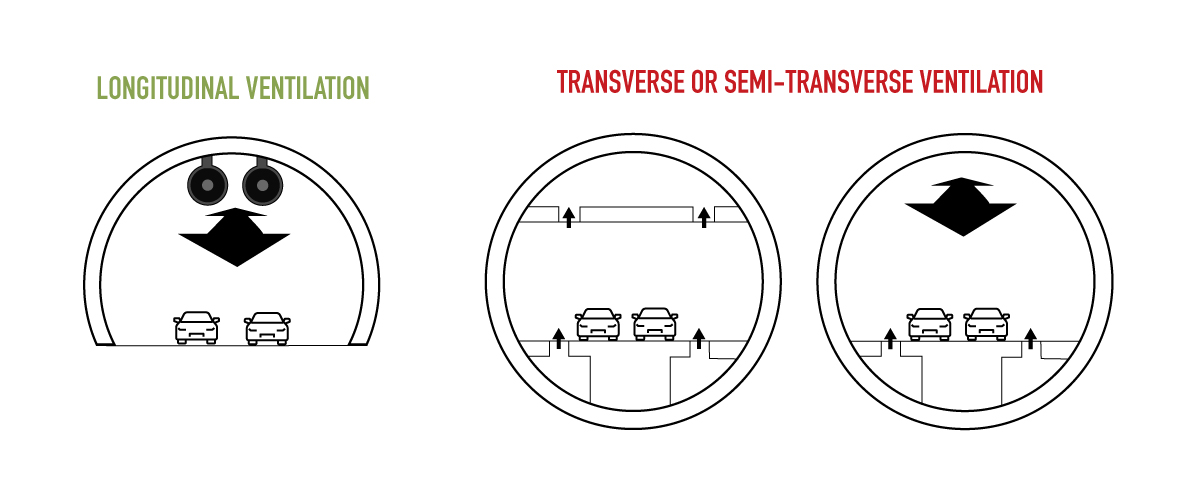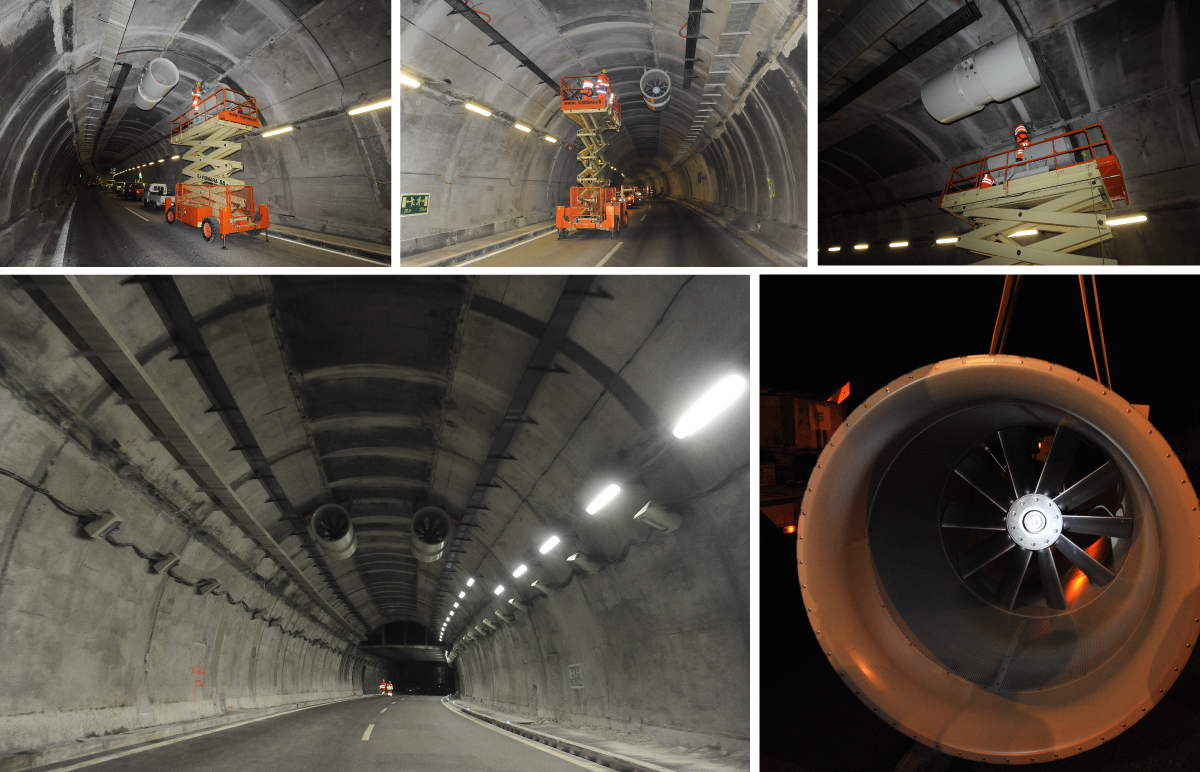Tunnel ventilation is an essential part of most construction projects. These tunnels have multiple purposes, from removing poisonous gases and dust to environmental protection. In this article, we share the different kinds of tunnel ventilation and how each type of tunnel ventilation works. Read our guide below to find out more.
Importance of Tunnel Ventilation
Every worker in a tunnel needs a constant supply of fresh air, ranging between 200 c.ft and 500 c.ft. The compressed air, which results from explosions and drilling, is unfit for breathing since it comes full of fumes, dust, and oil. In fact, this air must be removed from the working site via exhaust systems. There’s a 30-minute gap between the explosion and mucking. During this period, the ventilation system should remove the resulting air from such an operation.
The working conditions inside a tunnel can be extremely harmful to health, as it exposes workers to a plethora of toxic elements. In such conditions, the untreated air of a working site can contain all sorts of gases, like sulphurous acid gas, hydrogen sulphide and nitrogen oxide, on top of the usual carbon monoxide.
Main Types of Ventilation
There are plenty of smart engineering solutions for tunnel ventilation, but the machinery needed for the task will depend on the type of ventilation required. There are mainly three types of ventilation, as explained below.
Longitudinal Ventilation
The duct of this system is the tunnel tube, which has an air jet mounted on the tunnel entrance. These air jets, also called “jet fans”, are mounted at other points of the tunnel to accelerate the airflow. The efficiency of these fans depends on where they’re installed. They may need additional equipment if they’re placed near the tunnel wall, the soffit, or in a niche.
Jet fans have a side effect: they can become excessively noisy, impairing the communication of those in the tunnel. Ultimately, high noise levels threaten drivers and road tunnel maintenance workers, who could be unable to hear each other and pass on instructions. Some countries have also adopted air infiltration systems to mitigate CO2 emissions.

Transverse Ventilation
The transverse ventilation work paralleled the tunnel and mainly used two different ducts. Those are the fresh air ducts and the exhaust or extraction ducts.
The first type blows clean air into the tunnel and dilutes the vehicles’ emissions. The second type pulls out polluted air and hot gases inside the tunnel.
The extraction of smoke and vitiated gas involves motorised dampers, which can be remotely controlled. This kind of extraction is also called “point extraction”. Typically, the fans working on those ducts are placed on the shafts or tunnel entrances. However, the positioning of the equipment may vary from one case to another. Additionally, the size of the extraction fans may vary depending on the extraction rates required for each case.
Natural Ventilation
As the name suggests, natural ventilation relies on the natural airflow in the tunnel to circulate the air. It’s an effective solution for short tunnels under normal weather conditions. In this case, the pollution gets concentrated in the final section of the tunnel. However, pollution levels may rise inside the tunnel should the wind change directions or other adverse conditions arise.
Constructing Tunnel Ventilation
When building a tunnel, two criterias determine the kind of ventilation required for the task. First, it’s necessary to consider the tunnel’s size and length, based on which the engineers calculate the number of explosives that will be necessary. Second, a top-quality engineering project must consider the conditions inside the tunnel, i.e. average temperature and humidity.
Tunnel Ventilation Equipment and Tests
Thermal resistance is an indispensable feature for fans working on a tunnel. These fans should withstand the tunnel’s standard conditions and also be able to handle high temperatures in case of an emergency. The same goes for dampers, junction boxes, cables and other exposed system parts. However, the use of thermal fuses was abandoned once found they could open dampers untimely or in inefficient places.
Additionally, every piece of equipment involved in the system maintenance of ventilation tunnels must follow strict criteria to ensure safety performance. Also, every piece of equipment must provide clear information about performance on both transverse and longitudinal systems.
Check out below what kind of systems you’ll likely find on tunnel ventilation sites:
Exhaust Systems
Exhaust systems focus on promptly removing foul air from the working site. This system improves the airflow and air quality inside the tunnel by removing harmful components from the air.
Blowing Systems
Blowing systems do what the name says: they blow fresh air inside the tunnel using pipes. Eventually, the air blown in comes out, bringing dust and foul air. However, this system can create a fog inside the tunnel while the foul air is removed.
Combined Systems
It’s also possible to use an array of blowing and exhausting equipment to keep a constant airflow of clean air. This system is necessary when excavating a new tunnel: the exhaust system comes in after the explosion to clean up the environment. Afterwards, the blowing system pumps fresh air into the hole until the next explosion.
Tunnel Ventilations From Premel

Since 1947, Premel has provided tunnel ventilation design, building and road tunnel maintenance plus process automation and engineering solutions for companies and projects of all sizes in Italy, Switzerland, Germany and beyond. Premel is also able to provide trained engineers and technicians for all tunnel ventilation projects.
Premel follows ISO 9001 standards, reflected in its best quality policy and provides high-end and bespoke solutions for power engineering, industrial automation, industrial service and maintenance. Speak with one of the experts at Premel today and learn more about the tunnel ventilation systems and projects that Premel has done over the years.
